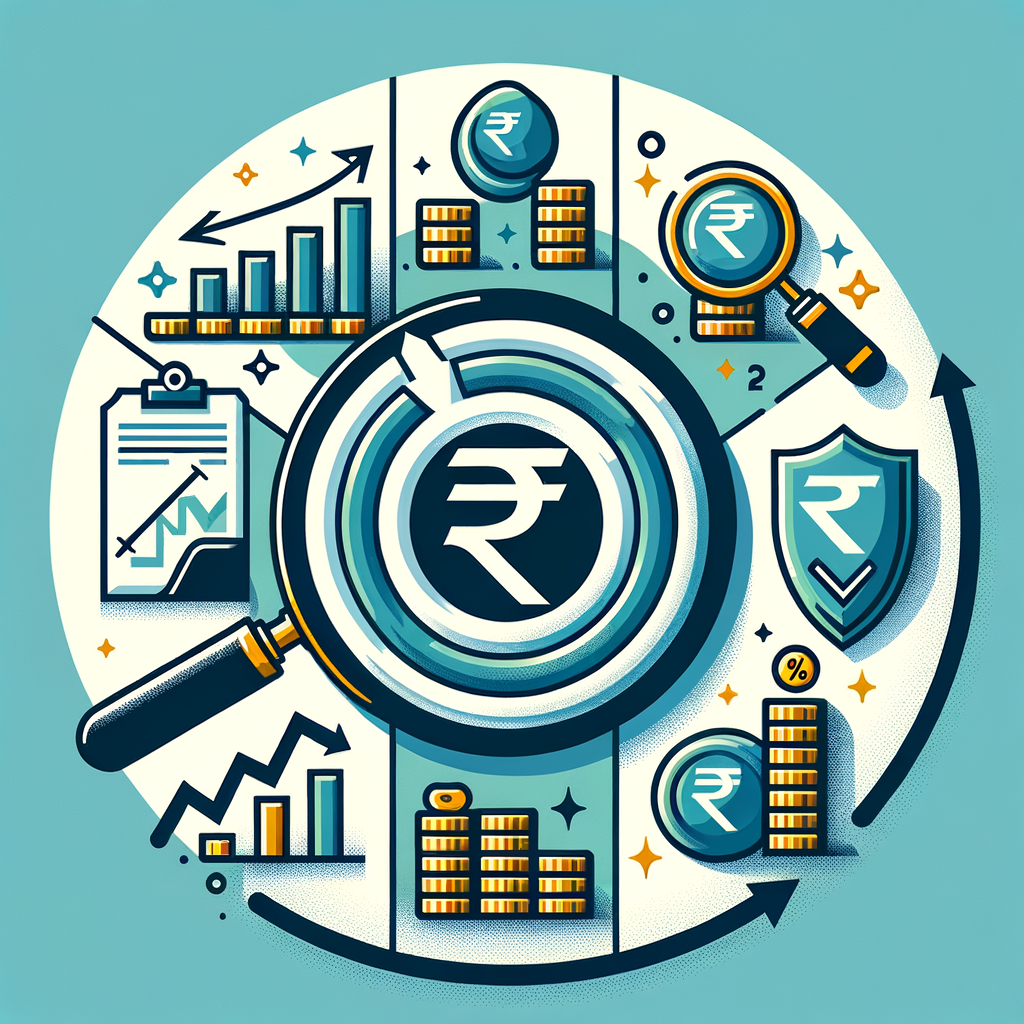Understanding Compound Interest on Your Debt: A Guide for Indian Borrowers
Introduction
Ever feel like you’re constantly paying off a loan or credit card bill, but the total amount barely shrinks? The culprit is likely a powerful financial force working against you: compound interest. While it’s a fantastic tool for growing your investments, it can be a destructive and relentless force when it comes to borrowing. This article will demystify compound interest on debt, showing you exactly how it works, its real-world impact on common loans in India, and most importantly, actionable strategies you can use to manage it effectively. This guide is specifically designed for small business owners and salaried individuals in India who are ready to gain control over their finances and break free from the cycle of debt.
What is Compound Interest? The Double-Edged Sword of Finance
At its core, compound interest is often called “interest on interest.” When you owe money, the lender charges you interest on the principal (the original amount you borrowed). With compounding, that interest gets added to your principal. The next time interest is calculated, it’s based on this new, larger total. This creates a snowball effect that can cause your debt to grow at an accelerating rate. Understanding this mechanism is the first and most critical step in effective debt management. It’s a double-edged sword: a friend to the investor but a formidable foe to the borrower.
Simple Interest vs. Compound Interest: A Clear Comparison
To truly grasp the power of compounding, it’s helpful to see it side-by-side with its simpler counterpart, simple interest. The difference between them is the core of understanding compound interest for debt management.
- Simple Interest: This is the most straightforward form of interest. It is calculated only on the initial principal amount for the entire duration of the loan. The interest amount remains the same for each payment period.
- Example: Imagine you take a personal loan of ₹1,00,000 at a 10% simple interest rate per year. Each year, you will accrue exactly ₹10,000 in interest (10% of ₹1,00,000). Over three years, you would pay a total of ₹30,000 in interest.
- Compound Interest: This is where things get more complex and costly for the borrower. Interest is calculated not just on the principal but also on the accumulated interest from previous periods.
- Example: Let’s take the same ₹1,00,000 loan at 10% interest, but this time it’s compounded annually.
- Year 1: Interest is 10% of ₹1,00,000 = ₹10,000. Your new balance is ₹1,10,000.
- Year 2: Interest is 10% of ₹1,10,000 = ₹11,000. Your new balance is ₹1,21,000.
- Year 3: Interest is 10% of ₹1,21,000 = ₹12,100. Your new balance is ₹1,33,100.
- Over three years, you’ve paid ₹33,100 in compound interest, which is ₹3,100 more than with simple interest. This difference grows exponentially over time.
- Example: Let’s take the same ₹1,00,000 loan at 10% interest, but this time it’s compounded annually.
The Critical Role of Compounding Frequency
The “snowball” of compound interest rolls faster depending on how often the interest is calculated and added to your balance. This is known as the compounding frequency. It could be annual (once a year), semi-annual (twice a year), quarterly (four times a year), monthly, or even daily. The more frequently interest is compounded, the faster your debt grows and the more you will end up paying. Credit cards, for example, typically compound interest on a monthly basis, which is a primary reason their balances can spiral out of control so quickly.
Let’s illustrate the impact of frequency on a hypothetical ₹1,00,000 loan at 12% per annum over 5 years.
| Compounding Frequency | Total Interest Paid (Approx.) | Total Amount Repaid |
|---|---|---|
| Annually | ₹76,234 | ₹1,76,234 |
| Semi-Annually | ₹79,085 | ₹1,79,085 |
| Quarterly | ₹80,597 | ₹1,80,597 |
| Monthly | ₹81,670 | ₹1,81,670 |
Key Takeaway: As you can see, simply changing the compounding from annual to monthly on the same loan adds over ₹5,000 to the total interest paid. When borrowing, less frequent compounding is always better for you.
The Real Impact of Compound Interest on Loans in India
Understanding the theory is one thing, but seeing its effect on everyday financial products is what truly matters. Compound interest isn’t just an abstract concept; it’s actively working in the background of many common financial obligations. Recognizing where it lurks is essential for building a solid defense against it and minimizing the impact of compound interest on loans India.
Where You’ll Encounter Compound Interest on Debt in India
- Credit Card Debt: This is the most notorious example. Credit card companies in India charge very high Annual Percentage Rates (APRs), often ranging from 24% to over 45%. This interest is compounded monthly. When you only make the minimum payment, you are often just covering the fresh interest charge and a tiny sliver of the principal. This creates a long and expensive debt trap where the balance barely decreases, even with consistent payments.
- Personal Loans: Most personal loans in India operate on a reducing balance method. While you pay a fixed Equated Monthly Instalment (EMI), the interest calculation behind the scenes is influenced by compounding principles. Each EMI consists of a principal and an interest component. In the initial years, the interest component is much larger. Any missed payment can lead to penalties and interest being charged on the overdue amount, which then compounds.
- Small Business Loans: For small business owners, understanding compounding is crucial for managing cash flow. Financial products like working capital loans or cash credit/overdraft facilities often calculate interest on the daily outstanding balance and compound it monthly or quarterly. If the utilised amount is high, the interest can accumulate rapidly, eating into the business’s profits and making it harder to manage operational expenses. This is why Managing Cash Flow Effectively During Tax Season is a critical skill for any business owner.
A Practical Example: How a Small Debt Can Snowball
Let’s create a clear scenario to show how compound interest affects debt repayment.
Scenario: Priya makes a purchase of ₹50,000 on her credit card for a new laptop. Her card has a high 36% APR, which translates to 3% interest per month. The bank requires a minimum payment of 5% of the outstanding balance or ₹500, whichever is higher. Priya decides to pay only the minimum amount each month to manage her cash flow.
Here’s a simplified look at what happens over the first year:
| Month | Opening Balance | Interest (3%) | Minimum Payment (5%) | Closing Balance |
|---|---|---|---|---|
| 1 | ₹50,000 | ₹1,500 | ₹2,575 | ₹48,925 |
| 2 | ₹48,925 | ₹1,468 | ₹2,520 | ₹47,873 |
| 3 | ₹47,873 | ₹1,436 | ₹2,465 | ₹46,844 |
| … | … | … | … | … |
| 6 | ₹44,831 | ₹1,345 | ₹2,309 | ₹43,867 |
| … | … | … | … | … |
| 12 | ₹39,267 | ₹1,178 | ₹2,022 | ₹38,423 |
After an entire year of paying diligently, Priya has paid a total of ₹27,780. However, her principal has only reduced by ₹11,577. A staggering ₹16,203 has gone just towards interest! If she continues this pattern, it will take her over 9 years to clear the debt, and she will have paid more than double the original purchase price. This is the brutal reality of high-interest, monthly compounding debt.
Actionable Compound Interest Strategies for Indian Borrowers
Knowing the problem is only half the battle. The good news is that by understanding the mechanics of compound interest, you can turn the tables and use specific strategies to dismantle your debt efficiently. Adopting proactive compound interest strategies for Indian borrowers can save you thousands of rupees and years of financial stress.
Strategy 1: The Debt Avalanche vs. Debt Snowball Method
Once you decide to pay more than the minimum, you need a plan. When considering popular methods like the Debt Avalanche and Debt Snowball, it’s worth exploring the question of ‘Debt Snowball vs. Debt Avalanche: Which Strategy Is Best for You?‘.
- Debt Avalanche: This method is mathematically the most efficient way to save money on interest.
- List all your debts from the highest interest rate to the lowest.
- Make the minimum required payment on all your debts.
- Allocate any extra money you have to the debt with the highest interest rate.
- Once that debt is cleared, you “avalanche” that entire payment amount (the original minimum plus the extra) onto the debt with the next-highest interest rate.
- Best for: Individuals who are disciplined and motivated by seeing the long-term financial savings.
- Debt Snowball: This method focuses on psychological wins to build momentum.
- List all your debts from the smallest balance to the largest, regardless of the interest rate.
- Make the minimum payment on all debts.
- Throw every extra rupee at the smallest debt until it’s gone.
- Once the smallest debt is paid off, you roll that payment into the next smallest debt, creating a “snowball” of increasing payment size.
- Best for: Individuals who need quick, motivating wins to stay on track and build good financial habits.
Strategy 2: The Power of Prepayments and Extra EMIs
Every single rupee you pay above your scheduled EMI goes directly towards reducing your principal balance. This is incredibly powerful because it does two things: it reduces the base on which future interest is calculated, and it shortens your loan tenure. Even small, consistent extra payments can have a massive impact over time.
For example, on a ₹5 lakh personal loan for 5 years at a 14% interest rate, your EMI would be around ₹11,634. If you pay just ₹2,000 extra each month, you could pay off the loan in about 4 years instead of 5, saving you over ₹45,000 in total interest.
Many banks and NBFCs in India allow for partial prepayments on loans, though some may have a lock-in period or charge a small fee. It’s crucial to check your loan agreement. You can also use online prepayment calculators on your bank’s website to see the exact impact of your extra payments. For official guidelines on prepayment charges and regulations, it’s always wise to refer to the central authority. You can find general consumer education materials on the Reserve Bank of India’s official website.
Strategy 3: Consolidate Your High-Interest Debts
If you are juggling multiple high-interest debts, like several credit cards and a high-rate personal loan, debt consolidation can be a game-changer. For a detailed breakdown of this option, see The Ultimate Guide to Debt Consolidation Loans. The goal is to combine all these debts into a single, new loan with a significantly lower interest rate.
- Personal Loan for Consolidation: You can take out a new personal loan from a bank offering a competitive rate (especially if you have a good CIBIL score) and use the funds to pay off all your credit card balances and other smaller loans. This leaves you with just one EMI to manage at a much more favorable rate.
- Balance Transfer Credit Cards: Some credit cards offer a promotional period (typically 3-6 months) with a 0% or very low interest rate on transferred balances from other cards. This can give you a crucial window to pay down your principal aggressively without interest working against you.
Pro Tip: When considering consolidation, always look beyond the headline interest rate. Check for processing fees, prepayment penalties, and the interest rate that will apply after any introductory period ends. The goal is to save money, so ensure the overall cost of the new loan is lower than what you’re currently paying.
Conclusion: Taking Control of Your Financial Future
The power of compound interest on debt cannot be underestimated. It is a relentless force that can turn small financial obligations into overwhelming burdens if left unchecked. However, it is not an unbeatable enemy. By understanding that it works by charging interest on interest, you gain the knowledge needed to fight back. The key to breaking free from the debt cycle lies in a two-pronged approach: first, fully understanding how your loans work, and second, applying smart, aggressive repayment strategies like the Debt Avalanche, making prepayments, or consolidating your high-interest liabilities. These actions stop the compounding process from working against you and put you firmly back in control of your financial destiny.
Managing debt can be complex, and every financial situation is unique. If you need help creating a personalized repayment plan, understanding your loan structures, or exploring financial restructuring options, TaxRobo’s expert advisors are here to guide you. Contact us today for a consultation and take the first step towards a debt-free future.
Frequently Asked Questions (FAQs)
Q1. Is all debt in India based on compound interest?
A: Not all, but most common forms of consumer and business debt that you will encounter, such as credit card debt, personal loans, and home loans, use a compounding interest model. The underlying calculations for EMI-based loans are based on these principles. Simple interest is rarer and typically found in informal lending or specific short-term loans. Always read your loan agreement carefully to understand the exact terms and how interest is calculated.
Q2. How can I quickly see the impact of compound interest on my loan?
A: The easiest and most effective way is to use an online loan amortization calculator. These tools are freely available on the websites of most major Indian banks and financial portals. You can input your loan amount, interest rate, and tenure, and it will generate a detailed schedule showing the breakdown of your principal and interest payments for every single EMI over the entire loan period. This visually demonstrates how much of your initial payments go towards interest.
Q3. Why is making only the minimum payment on my credit card a bad idea?
A: The minimum payment is a trap designed to maximize the bank’s profit. It is intentionally set very low (e.g., 5% of the balance) and is structured to primarily cover the high monthly interest charge and only a tiny portion of your actual spending (the principal). Because interest compounds monthly on the remaining large balance, you make almost no progress in paying off your debt. This can lead to you paying 2-3 times the original amount in interest and remaining in debt for many years.
Q4. Can I reduce the impact of compound interest by improving my CIBIL score?
A: Absolutely. Your CIBIL score is a direct reflection of your creditworthiness to lenders. A higher score (generally 750 and above) qualifies you for loans at lower interest rates. This provides a powerful strategy: you can refinance an existing high-interest loan (like a credit card or an old personal loan) with a new loan at a much better rate obtained because of your good score. This directly lowers the interest component of your EMIs and reduces the overall fuel for the compounding engine, saving you a significant amount of money.



